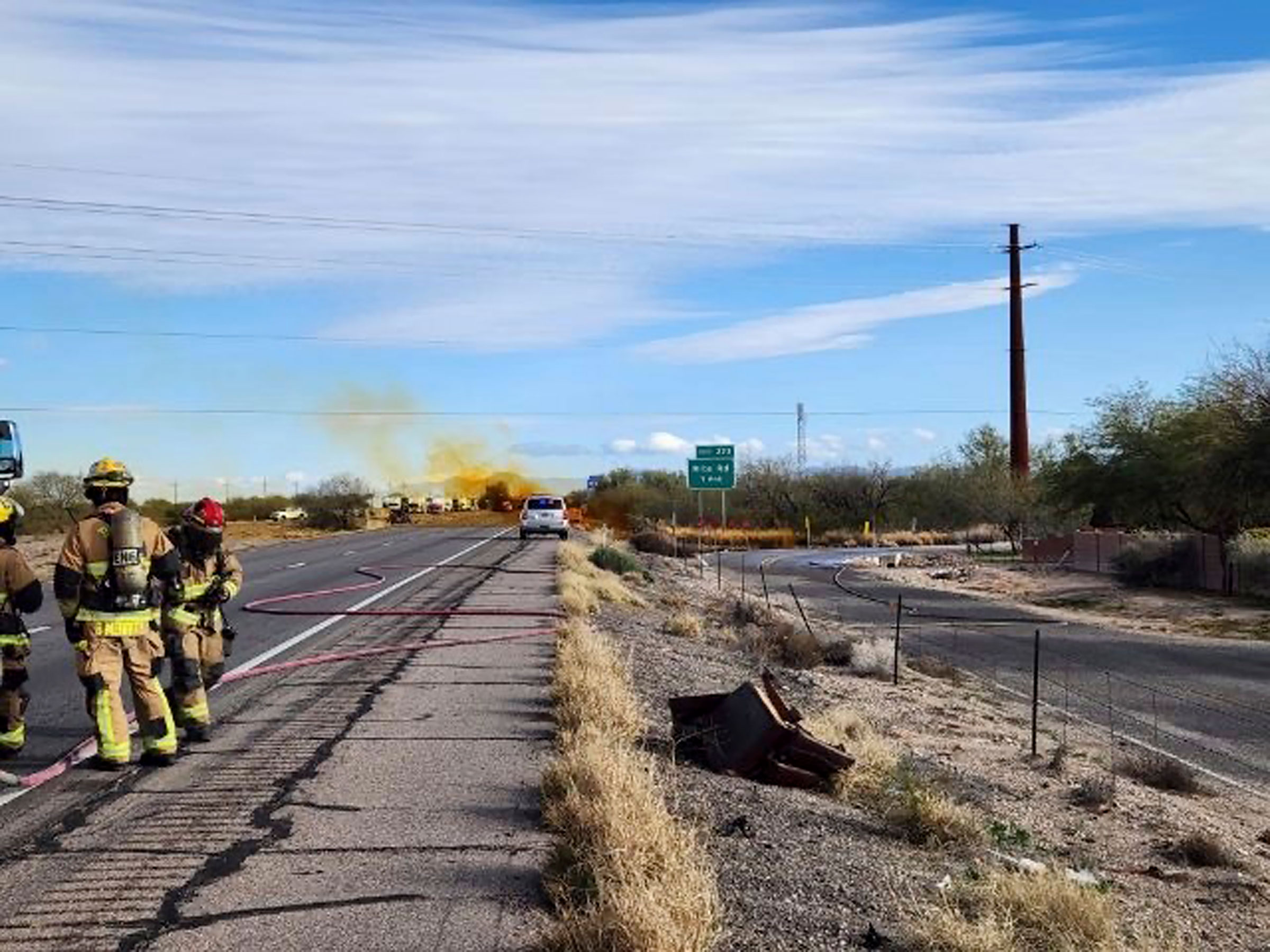
A shelter-in-place order was reinstated Wednesday morning on a main highway in Tucson, Arizona, after a tractor truck carrying liquid nitric acid rolled over in a deadly crash on Tuesday, causing a hazardous spill.
Residents within a half mile of the crash on Interstate 10 southeast were initially told to evacuate the area, and residents within three miles were under the shelter-in-place order. The orders were temporarily lifted Tuesday night, but the Arizona Department of Public Safety (AZDPS) reinstated the mandate on Wednesday morning after they said “gassing” occurred when they tried to remove “the load from the commercial vehicle.”
Weather conditions then limited recovery and mitigation efforts overnight, though crews have now successfully removed material from the truck and are using dirt to stop the gassing.
Nitric acid— which is mainly used in the manufacturing of fertilizers, dyes and explosives, can cause serious irritation around the eyes, skin, and mucous membrane—according to the CDC. Exposure to the highly corrosive liquid can also cause bronchitis, pneumonitis, and dental erosion.
The department is asking people within the shelter-in-place mandate to turn off heaters or air conditioning units that bring in outside air.
Authorities said that people should expect to remain displaced until midday Wednesday, and that Interstate 10 will remain closed in both directions, but a timeframe for how long was not given.
“We anticipate an extensive closure,” Arizona Department of Public Safety said in a tweet Tuesday night.
The driver of the truck was killed in the crash, but authorities haven’t released any other information about the wreck.
A separate hazardous spill from a train derailment occurred on Feb. 3 near the Ohio-Pennsylvania border, involving nearly 50 cars, releasing vinyl chloride in the air and causing fire and smoke to billow the town of East Palestine. Authorities asked residents on both sides of the border to evacuate out of concern of a possible explosion, though that order was lifted on Feb. 8.
Many residents are still worried about the quality of air and water in the area amid reports that thousands of animals have died in the days following the incident.
Multiple counties and agencies like the Environmental Protection Agency (EPA) are currently tracking the air, soil, and water pollution in the area.
The Ohio EPA said they found two chemical contaminants in Ohio River tributaries during a press conference Tuesday, but believed water treatment processes would filter these toxins out, and that contaminants were contained.
More Must-Reads from TIME
- Cybersecurity Experts Are Sounding the Alarm on DOGE
- Meet the 2025 Women of the Year
- The Harsh Truth About Disability Inclusion
- Why Do More Young Adults Have Cancer?
- Colman Domingo Leads With Radical Love
- How to Get Better at Doing Things Alone
- Michelle Zauner Stares Down the Darkness
Contact us at letters@time.com